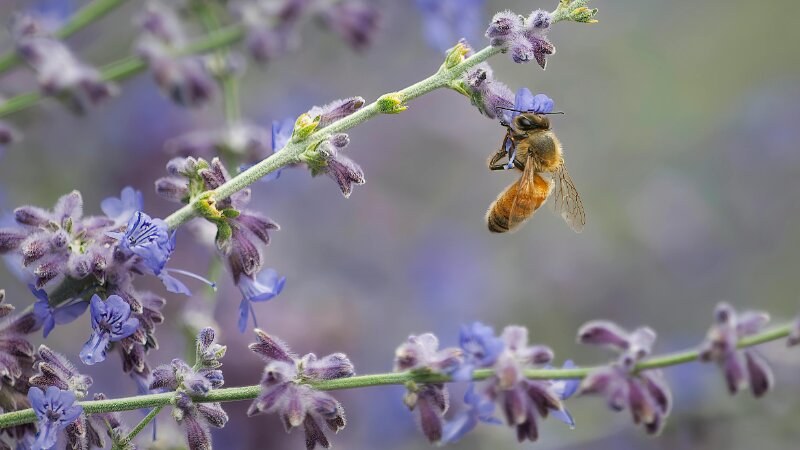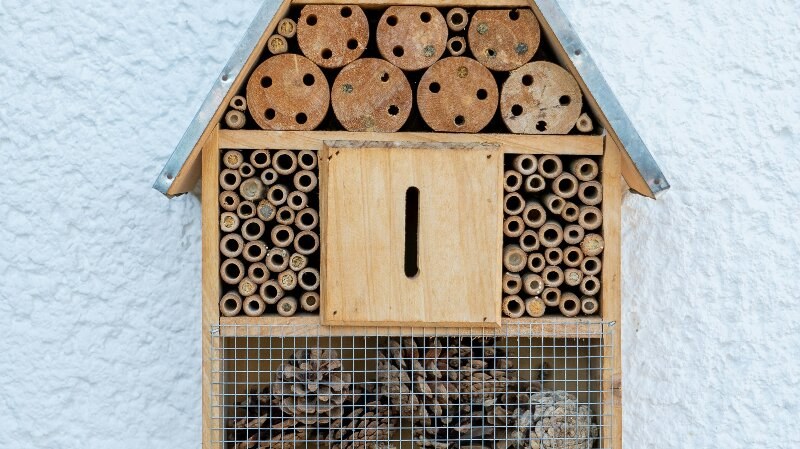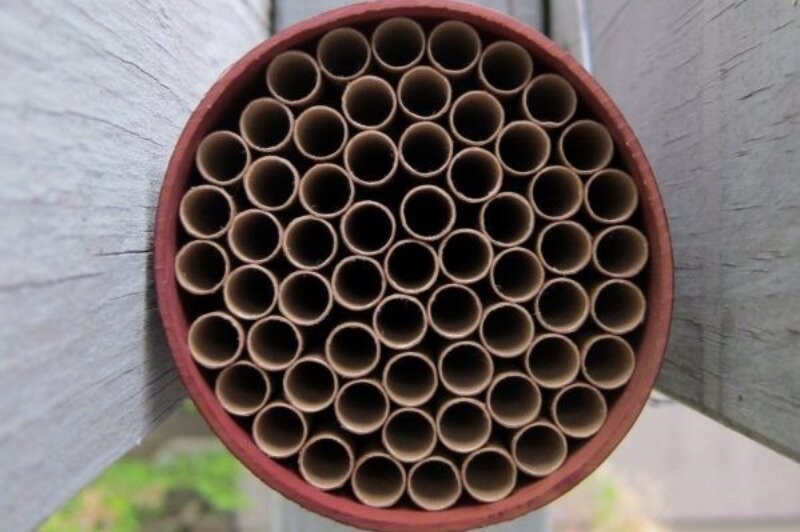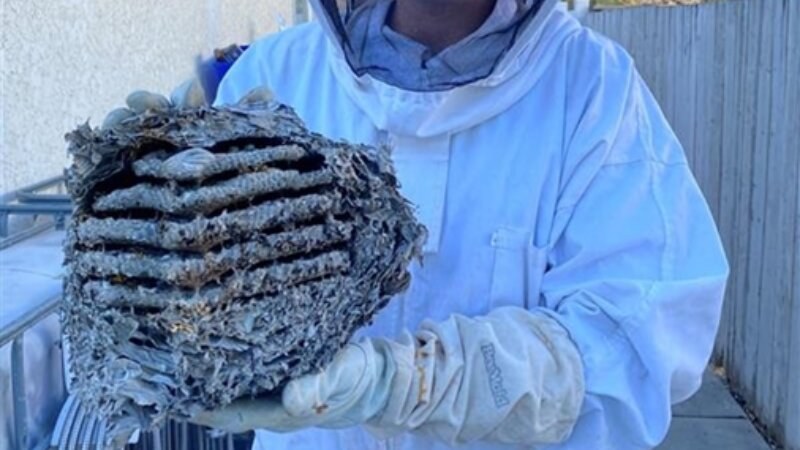The Ultimate Bee Guide: Kinds, Species, & Building a Bee Home
Reading time: 7 minutesDid you know? There are over 20,000 bee species in the world, and about 800 can be found in Canada. Contrary to popular belief, about 85% of bees worldwide are solitary and not social.
Let’s break this down further: social bees live in groups, make hives, can sting, and depend on the queen bee to reproduce. Solitary bees, on the other hand, mate independently, make their own nest, cannot sting, and do not make honey.
While honey-making is an important contribution of bees, only 9% of bees make honey. Their actual role lies as pollinators, carrying pollen between plants to allow fertilization, seed, and fruit production. 80% of all flowering plants depend on pollinators to transfer pollen.
Bees pollinate flowers, trees, and crops, helping food production and becoming crucial to the entire ecosystem. According to the Food and Agriculture Organisation (FAO) of the United Nations, about 71 out of 100 crop species are pollinated by bees. Understanding the role of bees in society and their contribution to agriculture signifies the need to preserve them and make the environment friendly to their existence.

The Bees Buzzing In Canada
Once you think of a bee, you usually picture a tiny yellow and black insect with wings, collecting nectar to produce honey. You’ll be surprised to see the variety in shapes, colours, sizes and functions of bees.
Among social bees, bumble bees are native to Canada, whereas honey bees were introduced here. Other bee species in Canada include:
Sweat bees
Often mistaken for houseflies, sweat bees are attracted to perspiration, have the least painful stings, and come in beautiful metallic colours like green, yellow, red, and black.
Carpenter bees
Often considered bumble bees, carpenter bees carve about 1-foot tunnels in soft wood to lay eggs and can buzz aggressively to defend their homes and sting. Largely solitary, some species reside in small colonies.
Parasitic bees
Also known as cuckoo bees, this invasive species lays eggs inside other beehives. When the young hatch, they consume the host larvae. Sometimes, they also kill the queen bees and force the colony to raise its young.
Leafcutter bees
With fury light bellies, leafcutter bees, or megachile bees are solitary bees that make nests in the stems of dead plants. Due to their pollination efforts, they are credited as the saviours of the alfalfa seed industry. A high protein source, alfalfa is an essential component of livestock feed.
Miner bees
Solitary bees that make small nests in the ground around hills, road cut-outs, and areas with moist soil.
Mason bees
Recognized by their shiny blue colour and small size, the blue orchard mason bees are solitary bees that contribute majorly to food, fruit, and berry pollination. Attracted to wooden structures, this non-aggressive species inhabits any wood cavities they can find.
Now that you know all about this friendly neighbour, here’s all you need to know about bee homes and how you can turn your yard into a friendly spot for these pollinators.

All You Need to Know About a Bee Home & Why Should You Get One?
Bees’ homes, also known as bee hotels, bee huts, and bee houses, are small wooden structures placed in gardens or backyards to give solitary bees a safe place to rest and breed.
As bee populations, in general, have experienced a decline worldwide, the threat to the bees is real, and adding bee homes is a small contribution to saving the ecosystem. If you have food and fruit plants or trees in your yard, these bees will help you pollinate them, all while staying close to their young and keeping them safe from parasites.
While the thought of preservation sounds like a great idea, there are things to consider before you jump into setting up one.
Things to Consider
- Bee homes attract a variety of pests and insects, including those of parasitic nature.
- Nesting materials may solidify inside, blocking the holes and increasing the risk of potential diseases.
- Every year, the hotel's tubes or tunnels need to be changed. Ideally, this is done in spring when all the stored young have hatched.
- Monitor activities around the box. If you notice birds predating around it, consider adding a mesh layer for protection.
- Protect your inhabitants from moisture and cold. Move to a safe spot as necessary.
Types of Bee Homes
If you’re ready to take on the responsibility, let’s discuss the different types of bee homes to make it easier for you to choose.
Nesting box: Shaped like a honeycomb, this is an affordable and eco-friendly option to attract solitary bees. Easy to install and maintain, these nests add a touch of beauty to your space and create a functional space with individual nesting spaces for the bees.
House-shaped insect hotels: Designed in the form of houses with sloping roofs, these bee hotels can be of multiple sizes, both small and large. They technically have more space to create different compartments, cater to diverse species, and be fixed in the garden ground or kept afloat, depending on their size. Made from a mix of materials like bamboo, wood, and other natural elements, they contribute to a healthy ecosystem. Also, the mini-houses symbolically look great as a house within your house for bees!
Tear-shaped houses: Carefully crafted into a tear shape, the compartments in this house can cater well to the nesting preferences of several species. It supports biodiversity while being a valuable visual addition to your garden.
Building an Easy DIY Bee Home
Making a bee house with your family could be a fun and educational activity. It would be a great way to build interest in connecting with and understanding nature. Doing it yourself also gives you ample room for creativity to pick and choose the shape, size, and colour, customizing it to your space.
Materials You Need
- Empty, clean, waterproof milk carton, coffee canister, can, wood or 2-litre bottle.
- Brown paper nest tubes (Online/Garden Store) or roll your own tubes with brown paper and a pencil
- OPTIONAL exterior zero – or low-VOC (volatile organic compounds) paint to decorate

Instructions
1. Pick your material for your Bee house (above) *If using wood, ensure it is NOT pressure treated.
2. Fill the box with layered stacks of brown paper nest tubes
a. Cut the tubes to a length between 5–10 centimetres (2–4 inches)
b. If rolling your own, the ideal diameter is no more than ¼ inch
c. Close the end with tape or a staple or fold them in half
3. Hang your bee home somewhere out of the rain, facing south or east, at eye level, once the temperature outside has warmed to 12°C – 14°C
a. When hanging/mounting, ensure that the home doesn’t sway or swing
4. Ensure that there’s moist clay near your bee home; they will use this as a construction material to seal their bee babies for the winter!
5. Replace the tubes once last year’s bees have left to keep the house clean, free of parasites, and ready for the next tenants
Frequently Asked Queries about Building a Bee Home
Now that you’re geared up to pick your bee home, let’s address some common queries.
Where should I position my bee nest box or bee home?
Place your nest box or bee home in sunlight, ideally facing southeast or south. Make sure it’s at least 1 meter above the ground and positioned in a stable, fixed location to prevent swaying or dislodgement. You can place it near vegetation but avoid obstructing the nest entrances.
What factors should I consider when choosing or creating a bee home?
Bee hotels are preferably made out of bamboo or wood to keep them clear of moisture. Plastic and any other non-breathable materials should be avoided as they cut out ventilation and lead to mould or fungus. Also, the material used should be easy to clean and have a solid back to withstand weather and wind.
What issues should I be aware of when selecting or making a bee home?
Be super cautious about the tubes not being too wide or too short to allow different species to find shelter and breed easily. If it traps moisture, has blocked entrances, sharp edges, or no food sources nearby, you might not be able to attract sufficient pollinators to your bee home.

Bee and Wasp Pest Control
Despite all precautions, there’s still a chance your bee home might get invaded by species like wasps, hornets, or parasites.
If you notice this, you’ll need to consider professional hornet and wasp control. Proactive pest control lets you get back to enjoying your yard. And Buzz Boss has the perfect solution. Our comprehensive pest control services kick pests out—and keep them out—with a protective barrier. Book your BuzzShield® Complete package.

